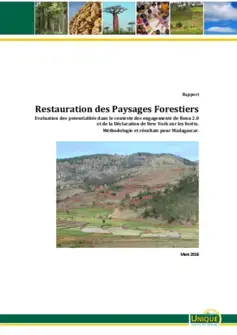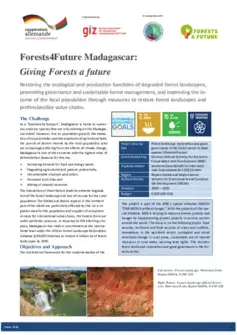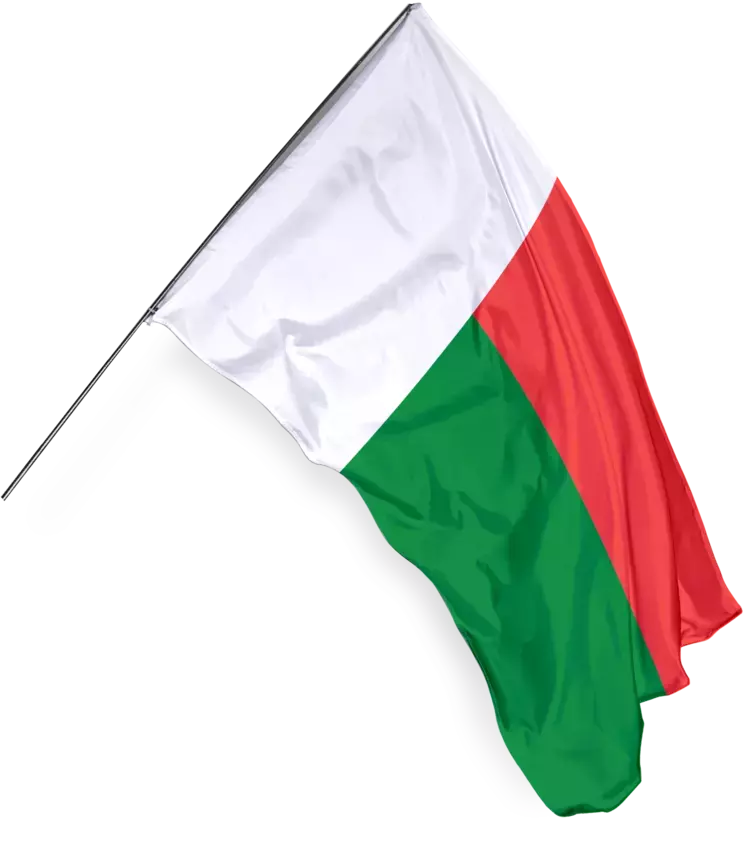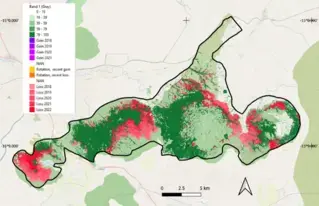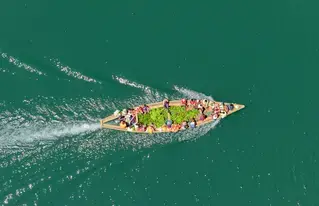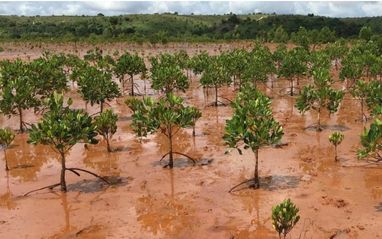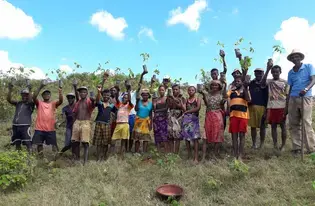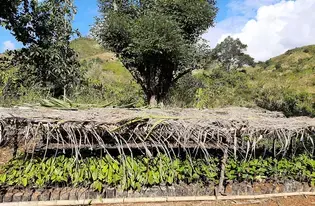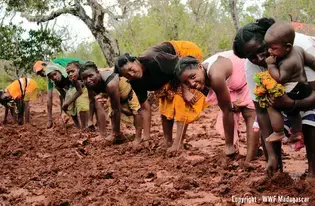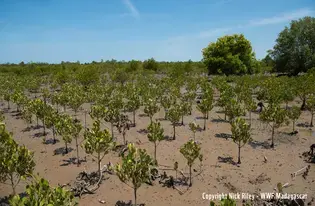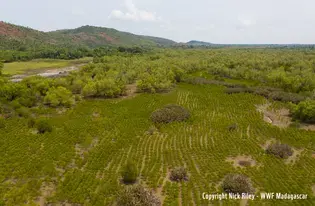Madagascar
May 2023
Latest Updates of Madagascar
Projects in Madagascar
Projects in Madagascar
Our Approach
Restauration des services écosystémiques par des actions de reboisement
En augmentant le couvert forestier, plusieurs services écosystémiques sont restaurés, notamment l'amélioration des sols et l'augmentation de la rétention d'eau ainsi que la séquestration du carbone, et constituent ainsi un mécanisme d'adaptation au changement climatique pour le pays.Mise en place de modèles de lutte contre l'érosion
Pour mieux gérer la restauration des terres dégradées, des modèles mécaniques et biologiques de lutte contre l'érosion ont été mis en place.Protection de la biodiversité dans les écosystèmes forestiers
Les lémuriens sont uniques à Madagascar et à certaines petites îles voisines. Plus de 80% de la biodiversité de Madagascar se trouve dans les forêts. La protection de ces écosystèmes, qui sont gravement menacés par la déforestation et la dégradation continues et rapides, est l'une des principales priorités du gouvernement et des parties prenantes. L'amélioration de la gestion des aires protégées combat les effets du changement climatique tout en augmentant la biodiversité et les fonctions de l'écosystème sous protection.Séquestration du carbone grâce à la gestion durable des forêts
La gestion durable et la conservation des forêts naturelles jouent un rôle essentiel dans l'atténuation du changement climatique en capturant le dioxyde de carbone et en stockant le carbone dans les sols et la biomasse forestière. Les actions de gestion forestière sont nécessairement appliquées pour soutenir le maintien ou l'amélioration du puits de carbone forestier. Veuillez ajouter cette note à un article/rapport de pays pertinent.Agriculture intelligente pour la gestion des terres et la conservation des sols
Les pratiques agricoles intelligentes face au climat, telles que le paillage, la gestion des résidus de récolte et les mesures de conservation des sols sont des approches prometteuses de la gestion du paysage qui s'attaquent aux deux pressions en augmentant la résilience et en réduisant les émissions à Madagascar. Ils comprennent des activités qui séquestrent le carbone dans le sol, ce qui améliore également la fertilité du sol et peut conduire à des rendements plus élevés. L'augmentation de la teneur organique du sol par le travail de conservation du sol peut augmenter sa capacité de rétention d'eau et sa résilience tout en réduisant l'érosion.
Steps to Success
Community Involvement
Involving communities in restoring both the ecological and productive functions of landscapes and implementing agroforestry measures contribute to improved livelihood, food security, jobs creation and biodiversity protection.
Intersectoral and multi-Stakeholder involvement
Madagascar has set up a FLR platform that integrates all categories of actors (ministries/departments, universities, research institutions, civil organizations and the private sector) working in landscape and forest restoration. This structure constitutes a space for sharing the tools developed during the first phase of the FLR process, and the general assemblies of the platform are also opportunities for the exchange of good practices and research results under the coordination of the national FLR committee. The platform is not only operational at the national level but also at the sub-national levels, there is the setting up and/or revamping of regional FLR platforms.
Design and production of tools to support the FLR process
Several tools have been developed to support the different categories of actors in the implementation of restoration activities.
A coordinating mechanism/platform
In order to oversee the implementation of Madagascar's commitment to landscape and forest restoration across sectors and other entities, the National Committee for Landscape and Forest Restoration (CNRPF) has been steering the process since 2015 through several mechanisms including the development of tools to support stakeholders.
Landscape and forest restoration is not the sole responsibility of an agency or ministry, but the responsibility of everyone. Landscapes encompass vast areas and cut across political and social boundaries. Because of this, the County and National government, universities, NGOs, community groups, and the private sector will all need to be involved if we are to reverse the direction of ecosystem degradation and live in a more verdant, resilient and productive world.
Capacity building
In relation to the governance of actors in the FLR process, particularly in terms of capacity building of categories of actors, tools have been produced (see above) to facilitate the transfer of useful knowledge according to the needs of the types of actors involved in restoration projects.
The new FLR projects, under different funding, have also benefited from FLR capacity building at the beginning and even during their implementation period.
In addition, given the close relationship between the effect of climate change and land degradation, the intensification of awareness raising and capacity building sessions is scheduled in the planning of projects working in the FLR process in Madagascar.
Partnership
Partnership management in the governance of the FLR process is very important in finding the necessary means towards achieving the commitment to landscape and forest restoration. Partnerships and resource mobilization include rationalizing engagement with partners, overcoming fragmentation and systematically tapping into increasing finance opportunities, comprising climate finance.
Key Milestones





Our Vision
Madagascar aims to maintain/restore basic ecosystem services to support green development for the Malagasy people. In this way, restoration activities aim to better manage soil fertility and water resource availability for biomass production in the primary sector.
Priority Interventions:
- Transform large areas of deforested and degraded lands into resilient and multifunctional ecosystems with the aim of improving local and national economy
- Carbon sequestration
- Improve food security and water supply
- Protect biodiversity in forest ecosystems



Campagne de Reboisement dans la Région DIANA -Nord Madagascar, GIZ Forests4Future Madagascar 2021
Resources
in Madagascar

